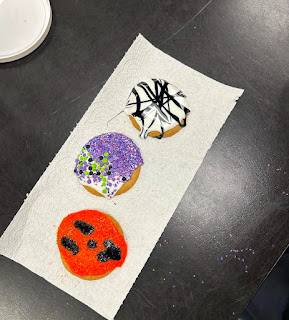In February 2012, Bon Iver graciously earned its first two Grammy awards: Best Alternative Album and Best New Artist. Founded by alternative singer-songwriter Justin Vernon, the band received multiple reactions following its paramount win, predominately that of the confused variety.
As a folk band with indie elements, Bon Iver remained an unfamiliar band prior to the Grammys. Vernon’s 2008 debut, For Emma, Forever Ago, was the first album released under Bon Iver. With brooding vocals representative of Vernon’s three months of isolation in a Wisconsin cabin, the album gave Bon Iver repute as a single genius with haunting vocals. Later joined by Sean Carey, Mike Noyce, and Matt McCaughan, the group released its self-titled album in 2011.
Viewers were confused after the Grammys. Who—or what—was Bon Iver, and how did they win such magnanimous recognition if the general public had no knowledge of them? More importantly, from which intimate, melancholy-drenched rubble did Bon Iver rise, and who else might be down there?
Since mainstream entertainment covers performers of principal, dominant trends, bands like Bon Iver fail to receive recognition as legitimate groups comprised of talented artists. Included in this neglected majority are bands that are foreign to a particular nation, such as Norway’s Kings of Convenience, or France’s Phoenix.
Some foreigners, including Mumford and Sons, Florence and the Machine, and Keane (all of whom hail from England) manage to integrate into entertainment traffic in locations within the U.S. due to a lucky MTV break or a moment in a feature film, but do not quite have the same impact on music that is constantly recorded and played throughout the country. Tyler Thompson, freshman, says, “If I like the song, I like the song. But if I hear it too much when it gets popular—if it does—I’ll avoid listening to it because it’d most likely be old at that point.” Because underground artists are produced on more independent labels, they are not frequently played on the radio, thus giving them the fortune of having timeless songs.
The issue with mainstream music is that it is regulated by artists of familiar labels, therefore limiting the diversity available. In most instances, flipping through various radio stations will often remind the listener that the same song is played on more than one station. When that tune is overplayed, it’s on to the next catchy set of meaningless lyrics that are easy to follow along (if you’re easily amused, which accounts for a large amount of the population).
The difference, however, is that indie music takes more than just a casual listen to fully encapsulate. It is meant to be consumed and pondered, thus making it fully enjoyable. Junior Kim Tricker believes, “The substance of music has a meaning beyond the shallow, superficial surface, and the artists write songs to convey emotions rather than earn a living.”
While mainstream artists slip into their studios and repeat the same lyric time and time again, only to baste the entire song with auto tune in preparation for the record, indie artists use the raw elements of music in order to attract listeners. The dispute lies within entertainment traffic, which more often than not rejects the standards of indie music. “Indie music,” as Tricker continues, “isn’t about the money. It’s about the artist creating art that is a reflection of himsel[f…]like Bon Iver, and his frequent references to Wisconsin and his cabin.”
Indeed, Bon Iver and other artists create stories through a delicate balance of instrumentals and powerful vocals that, when combined, produce a sound so unlike the works of mainstream artists, whose futile lyrics and shoddy musicianship do nothing for the sake of ‘good music.’
Junior Prakash Sundar identifies with both indie/foreign artists and mainstream artists: “There are foreign bands that are mainstream in their own countries, who sound similar to the mainstream here, but a touch different. Indie bands have a totally different sound to them.” It is this distinctive sound that separates the powerhouse Katy Perry’s, Drake’s, and Lady Gaga’s from the more subdued, provocative Young the Giant’s, Ra Ra Riot’s, and Death Cab for Cutie’s.
Claire Hoppen, sophomore, says awards shows like the Grammys “definitely open up new doors for them [indie artists]. Millions of people watch the Grammys each year, so it is really good exposure for them. And what happened with Bon Iver, the Grammys allows them to gain traction and fans.” Don’t listen to the naysayers, Bon Iver. It’s clear that the taste in indie music is an acquired one that is fine tuned to classic properties of music, reflective of emotion and insight. Says Tricker, “People like music on the radio because it’s catchy or whatever. But indie music actually means something.”























